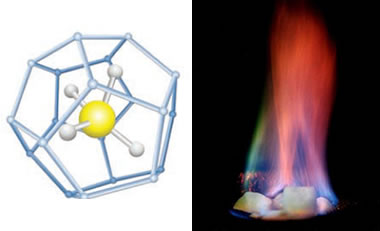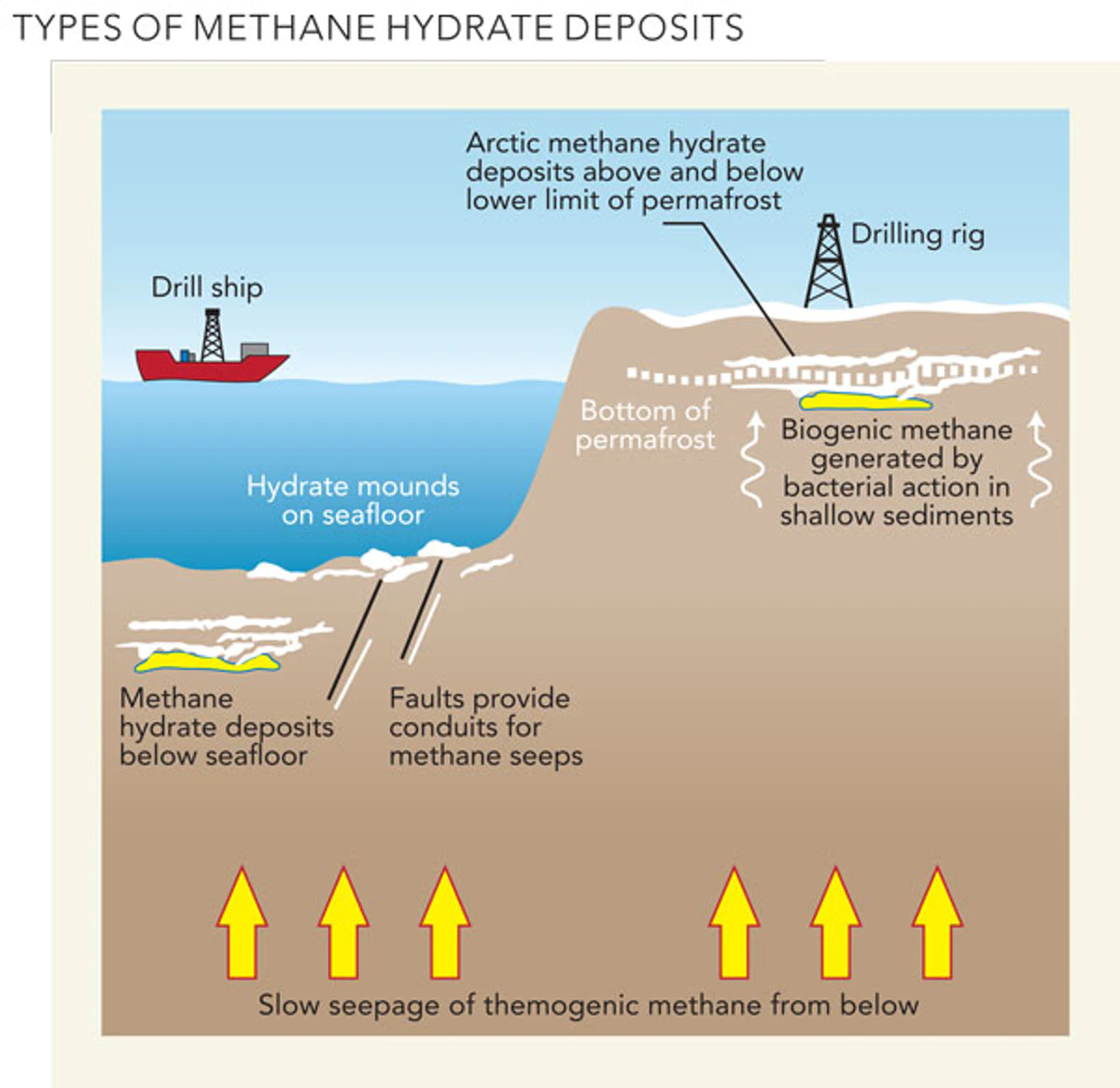UPSC Articles
Study on biogenic methane hydrate in the Krishna-Godavari (KG) Basin conducted
Part of: GS Prelims and GS-I – Mineral & Energy Resources
In news
- Recently, a study on biogenic methane hydrate in the Krishna-Godavari (KG) Basin was conducted by the researchers at the Agharkar Research Institute (ARI).
- They have identified the methanogens that produced the biogenic methane trapped as methane hydrate.
- Methane hydrate can be a significant source of energy.
- This study revealed maximum methanogenic diversity in the KG basin in comparison to the Andaman and Mahanadi basins.

Important value additions
Methane Hydrate
- Methane hydrate is a crystalline solid that consists of a methane molecule surrounded by a cage of interlocking water molecules.
- It only occurs naturally as ‘ice’ in subsurface deposits where temperature and pressure conditions are favourable for its formation.
- It becomes unstable if the ice is removed from its environment.
- Other names: Methane clathrate, methane ice, fire ice, natural gas hydrate, and gas hydrate.
- Most methane hydrate deposits also contain small amounts of other hydrocarbon hydrates.

Krishna-Godavari Basin
- It is an extensive deltaic plain formed by two large east coast rivers, Krishna and Godavari
- Location: Andhra Pradesh and the adjoining areas of Bay of Bengal.
- The site is known for the D-6 block with the biggest natural gas reserves in India.
- The first gas discovery was made in 1983 by ONGC.
- The basin is home to the Olive Ridley Sea Turtle (IUCN Status: Vulnerable).
Do you know?
- Biogenic Methane is the methane produced from the metabolic activities of living organisms.
- Methane is a clean and economical fuel.
- Even the lowest estimate of methane present in the methane hydrates in the KG Basin is twice that of all fossil fuel reserves available worldwide.















